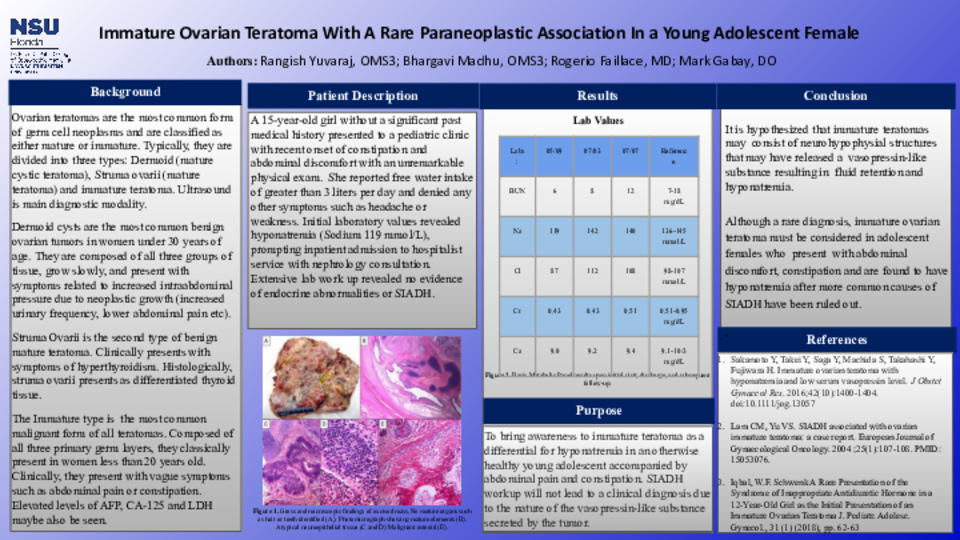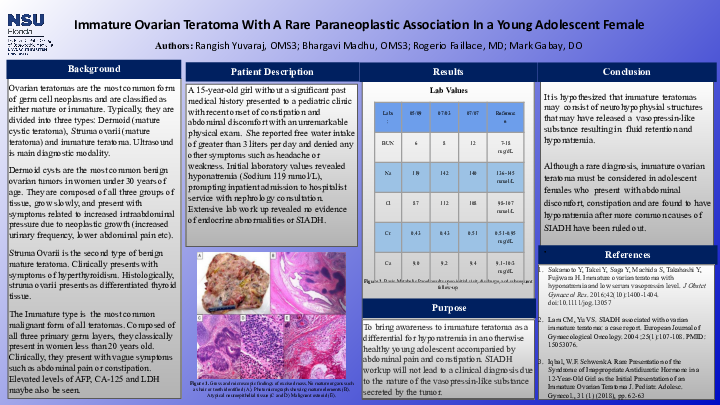Abstract
Introduction: Immature ovarian teratomas represent less than 1% of all ovarian teratomas. They most often occur in the first two decades of life, accounting for up to 20% malignant ovarian tumors in this age group. These teratomas contain tissues derived from the ectoderm, mesoderm, and endoderm. We are reporting a case of a 16-year-old girl with immature ovarian teratoma who presented initially with hyponatremia thought to be caused by excessive free water intake, but due to the persistence of hyponatremia following water restriction, further work up revealed a pelvic mass. This case is unique in that ovarian teratomas are not typically associated with paraneoplastic syndromes.
Case Description: A 16-year-old girl without a significant past medical history presented to a pediatric clinic with recent onset of constipation and abdominal discomfort with an unremarkable physical exam. She reported free water intake of greater than 3 liters per day and denied any other symptoms such as headache or weakness. Initial laboratory values revealed hyponatremia (Sodium 119 mmol/L), prompting inpatient admission to hospitalist service with nephrology consultation. Extensive lab work up revealed no evidence of endocrine abnormalities or SIADH. The patient was placed on supplemental salt and water was restricted from her diet which showed to initially improve the hyponatremia. The findings were then attributed to be dilutional due to excess water intake as lab results were inconclusive of any endocrine abnormalities. Repeat follow up laboratory values with nephrology were significant for persistent hyponatremia (Sodium 127 mmol/L), hypocalcemia (Calcium 8.6 mmol/L) and Creatinine of 0.46. Renal ultrasound revealed a large pelvic mass and the patient was admitted for further management. CT imaging of the abdomen and pelvis revealed a 16 cm × 10 cm × 12 cm mass in the right ovary and fallopian tube with complex solid and cystic elements with dystrophic calcifications along with a mildly elevated AFP (12.2 ng/mL). The patient was readmitted and underwent exploratory laparotomy with a right salpingo-oophorectomy, left paratubal cystectomy, biopsy of right diaphragm, rectal mass, omentectomy, and peritoneal stripping. The pathology revealed a grade 3 immature teratoma with no malignant elements, gliomatosis peritonei of the right diaphragm, rectum, and peritoneum. The hyponatremia resolved soon after the surgery, indicating a paraneoplastic etiology.
Discussion: Although a rare diagnosis, immature ovarian teratoma must be considered in adolescent females who present with abdominal discomfort, constipation and are found to have hyponatremia.






